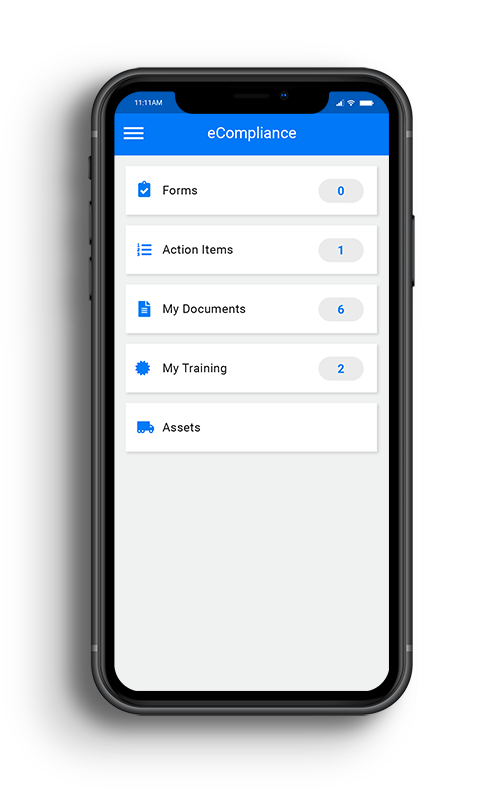
Share this Post
PUBLISHED
May 20, 2021
READ TIME
4 Minutes
WRITTEN BY
![]() Dina Adlouni
Dina Adlouni
Dina is the resident Content Writer at Alcumus North America. When she’s not writing about health and safety, you’ll find her enjoying a cup of tea while watching her favorite sitcom.
We recently discussed the Occupational Safety and Health Administration (OSHA) under Biden and what changes this entails, in our webinar A First Look at OSHA Under Biden.
In the webinar we discussed:
- How the new Biden Administration will affect safety professionals and employers
- Key insight into OSHA’s COVID-19 strategy
- The Emergency Temporary Standard (ETS), National Emphasis Program (NEP), and the Enforcement Response Plan (ERP)
- How targeted employers can prepare for inspections under OSHA’s new COVID-19 National Emphasis Program
- How technology can help you stay compliant
To help safety professionals navigate their way, we’ve collected the top five FAQs from the webinar and outlined them below to help you along your journey:
1. What is the difference between previous requirements last year and the most recent update from OSHA on guidance (Jan. 29, 2021)? Could this guidance become an official Emergency Temporary Standard (ETS)?
There is no difference between the initial guidance from OSHA in 2020 and the new guidance in 2021. OSHA has deemed it “stronger guidance”, however it is not a requirement.
The January 2021 guidance and the Emergency Temporary Standard (ETS) have some similarities and differences:
- The ETS will be a requirement which you must comply with.
- The possible reporting of non-work related COVID-19 cases is not under OSHA’s guidance and may be a requirement in the ETS.
- The requirement for Hazard Pay, where employees are paid a bit more, is another difference under ETS. This is for employers under high-risk industries, where employees are at a higher risk of COVID-19 than others.
- Medical removal protection benefits under federal OSHA is another difference. This standard states that if an employee is exposed to lead and must be out for medical reasons, the employer must maintain the earnings, seniority, and all employee benefit rights and benefits till their return.
2. Where could we find a copy of the OSHA National Emphasis Program (NEP) and when will inspections start?
OSHA’s National Emphasis Program was issued on March 12th alongside an updated Interim Enforcement Response Plan (ERP) and is effective immediately. This NEP will remain in effect for one year.
Targeting for programmed inspections began on March 26th and OSHA will inspect organizations in target industries, using a phased approach. The highest priority is now being given to COVID-19 fatality inspections and to other unplanned inspections, alleging employee exposure to COVID-19 related hazards. This could be as a result of a hospitalization or exposure to COVID-19 or due to an employee complaint.
You can find a copy of OSHA’s NEP here.
3. Where could we get the Enforcement Response Plan (ERP)?
This is a roadmap for compliance officers to follow during these NEP inspections and all COVID-19 inspections. It focuses on three elements including:
- A combination of inspection, targeting employer outreach and compliance assistance.
- Significantly reducing or eliminating worker exposures by targeting industries and worksites with a high frequency of close contact.
- Targeting workplaces with a higher potential for exposure to COVID-19 like healthcare and critical infrastructure, such as construction and manufacturing.
This can be found on the OSHA website here.
4. Who is the NEP targeting and where could I find/receive the NEP target list?
One of the primary targets of the NEP is healthcare, including the office of physicians, dentists, health care services, ambulance services, and more. Targeted industries for non-healthcare employers are also mentioned which include supermarkets, food manufacturers, general warehouse and storage, in addition to others. The list of non-healthcare targets in essential industries include construction, food and agriculture, critical manufacturing, energy, and more.
To find out more information on the NEP target list, click here.
5. Could you share any thoughts into OSHA’s COVID-19 requirements vs. certain state or local requirements?
Many states are backing away from mass mandates. When federal OSHA implements a mass mandate in states subject to federal OSHA, it will override any state or local requirements. For instance, in Florida, they have just stated that masks are no longer required. Florida is subject to federal OSHA, so if the ETS has a mask mandate it will not take priority.
Specific to the construction industry, many contractors and employers continue to maintain the COVID-19 suggested guidelines provided by the CDC. Much like other OSHA Standards, the employer has the right to set its policy to their own standard. This may be equal to or higher than the OSHA, ANSI, NIOSH or in this case the CDC standard.
For instance, OSHA/ANSI/Manufacturer does not require personnel to utilize Personal Fall Arrest systems when operating an Aerial Work Platform (AWP) / Scissor Lift. However, many GCs require 100% Tie Off when operating AWPs. This is often recognized as a Site Specific Policy or Procedure. OSHA supports and holds employers to the most stringent work practice or policy for that operation. Similar issues arise in areas of ladder use and PPE such as gloves.
With many states making a transition to opening up the public and lowering the requirements and restrictions associated with COVID-19, it is not uncommon to see contractors and employers holding firm on their mask requirements, sanitation, and ventilation methods. It is great that we are making progress, but ultimately the employer or controlling contractor has the ability to hold their employees and contractors to their elevated standard.
Next Steps…
To get more information and a closer look at OSHA under the Biden Administration, check out our webinar to help you strengthen your safety approach. Our suite of safety products can also help you maintain compliance and stay proactive. Find out how by speaking to one of our safety experts today.
Speak to an Alcumus Safety Expert Today
Unleash the Potential Within Your Safety Data Now


